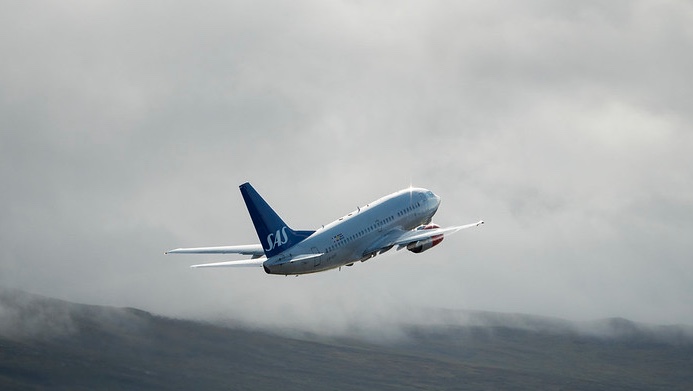Scandinavian Airlines (SAS) warned it would take “a few days” to get flights running on schedule again, but many would after a lengthy pilots’ strike ended during the night. No one seemed happy with the results of marathon negotiations, which left pilots committed to a record-long labour contract and SAS with huge financial losses, but stranded passengers were relieved. There were also new signs of investor interest in the long-troubled airline.

SAS still had to cancel more than 100 flights on Tuesday even after the strike that ruined summer holidays and other travel for tens of thousands of SAS customers finally ended, after 15 days of heated conflict and grounded aircraft.
The highly public quarreling between SAS and its angry pilots continued until the pact was announced Monday night, with the two sides arguing even over whether an agreement had been struck. The pilots, meanwhile, have been furious for the past year, when SAS’ parent company refused to rehire those laid off during the Corona crisis. Instead they had to apply for new jobs in a new subsidiary that’s part of a restructuring meant to make SAS more competitive.
It wasn’t until 3:20am on Tuesday that leaders for the two sides finally emerged from what they all called “demanding” negotiations to confirm the strike was over. The pilots will get their jobs back in the SAS company in which they previously were employed, but in return had to accept a 5 percent pay cut and a five-year labour contract. Such contracts usually extend for just one or two years in Norway, but the SAS pilots now won’t be able to negotiate new terms or strike until September 30, 2027.
Martin Lindgren, representing the Swedish pilot union SPG, told reporters who’ve been following the tough negotiations in Stockholm that the pilots did, however, secure “pay development” in line with inflation and the terms of labour agreements secured by other unions’ collective bargaining in Scandinavia. All pilots in SAS will also be covered by the same collective bargaining contract signed during the night.
Some fear the consequences
The leader of Norway’s SAS pilots’ union, Roger Klokset, admitted he was far from satisfied with the settlement. He told state broadcaster NRK and other reporters that he thinks the SAS pilots “secured the Scandinavian model (of organized labour) but at a very high price.” He claimed the unions were forced to allow “great savings” for SAS, and had “worsened working conditions and pay for our members,” but “we have made sure that SAS management follows our labour contract,” with other pilot union leaders stressing that it applies to all three SAS companies after its restructuring.
Other labour leaders also expressed concerns. Tor Morten Thorsen of the large industrial labour union Herøya Arbeiderforening, called a five-year contract “three years to many” and fears its consequences. “I fear other company executives will think (like SAS) that’s very smart,” Thorsen told NRK, adding that he thinks it “ruins the Norwegian model” for labour negotiations.
‘Utopian’
Stein Lier-Hansen of the industrial employers’ organization Norsk Industri disagreed, saying he doubts the SAS pact will have much effect on others. Longer labour contracts have never been a central demand from his group’s employers, and that “five years seem completely utopian to me.”
The leader of Norway’s largest trade union confederation LO, Peggy Hessen Føslvik, meanwhile, said in a joint statement with other labour leaders that they were glad the strike was over and praised the SAS pilots “for stretching themselves very far for a settlement to end the strike.”
The strike has cost SAS up to SEK 130 million per day, and the airline wasn’t expected to be back in full operation until the weekend. The airline’s top priority is to get aircraft to places where the most SAS passengers have been stranded, to bring them home.
SAS’ chief executive Anko van der Werff issued an apology to all customers affected by the strike. He added that it was important that the pilots also “contributed” to the process of restructuring the airline, which filed for reorganization under Chapter 11 of the US Bankruptcy Code that protects companies from creditors. Van der Werff warned that SAS still isn’t “stable,” but added that “the fact the pilots are on board is very good news.”
Investors needed
Van der Werff also confirmed SAS will now speak with new potential investors to “clarify why this is a good agreement for everyone,” and why it can increase the chances they’ll invest in SAS. The airline needs as much as SEK 9.5 billion in new share capital.
Among possible investors is Jan Petter Sissener, who’s long been a major player in funds management in Oslo. He told NRK on Tuesday that his investment firm may be interested but it will depend on “how the total package looks.” He called SAS’ settlement with its pilots only “a bit” of it, and a small one compared to how SAS’ creditors will respond to the airline’s overall restructuring.
The Swedish government has so far refused to invest more in SAS, while the Norwegian government has said it won’t reinvest in the airline. Norway’s new trade minister, however, later suggested the government may change its mind. The Danish government has offered more investment support, not least because SAS is the dominant airline and user of Copenhagen’s Kastrup Airport as a major SAS hub.
Sweden’s wealthy Wallenberg family has also expressed interest. Sissener said SAS management now “must show us and other investors that they have a business model moving forward that will make it possible to earn money. That’s most important. We’ll look at it, absolutely, and are neither positive nor negative. But lots of pieces of the puzzle need to fall into place.”
newsinenglish.no/Nina Berglund

